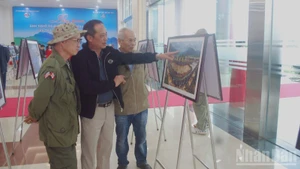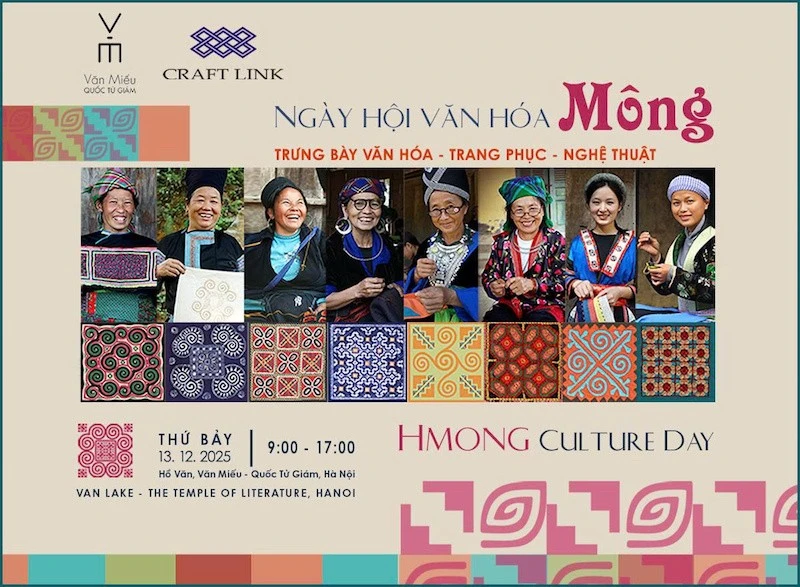Xam is a form of folk performance through singing and music, which was formed the 14th century, by blind people who went busking to earn a living in crowded places such as markets, wharfs and railway stations. According to Prof. Dr. Tu Thi Loan, former Acting Director of the Vietnam National Institute of Culture and Arts, each folklore art form of the Vietnamese people has its own characteristics showing the localities’ identities. However, Xam has been widely spread and disseminated as singers travelled from place to place, singing in public. The musical form has been passed down and created by many generations of folk artists.
Xam singing has profound human values, from praising the homeland and reviewing the historical traditions, to reversing bad habits, promoting moral education and condemning injustices in society. Regarding artistic aspect, Xam refined the beauty and quintessence of traditional music genres such as cheo (Vietnamese traditional opera), ca tru (ceremonial singing) and quan ho (love duet singing) but have their specific nuances and characteristics.
Xam singing used to be popular in the past. However, like other traditional art forms, Xam has been facing many difficulties and challenges when the country promoted the industrialisation, modernisation and international integration. The developed economy caused the narrowness of the traditional folk performance environment. In addition, the competition of modern art forms has led to the change of the public’s tastes. When Meritorious Artist Ha Thi Cau, who was honoured as a "living human treasure” and a keeper of Xam’s soul, passed away in 2013, the number of Xam artisans became less and less. The transmission of Xam has been carried out orally, so the documentation of the art form is also limited. These problems put Xam singing at risk of being lost. Recently, in the face of the trend of returning to traditional cultural values, Xam singing has gradually been restored through the formation of Xam clubs. Xam has become a material for a number of modern musical works and was "staged" in many performances. However, according to many cultural experts, it is crucial to make a long-term strategy, with many synchronous measures to protect and promote the value of Xam singing in contemporary life. Ninh Binh province, one of the long-standing cradles of Xam¸ has been coordinating with the localities, having this art form to make a dossier for Xam’s inclusion in the list of national intangible cultural heritages and submit the dossier to UNESCO for recognition of an intangible cultural heritage in need of urgent protection. These events are practical and timely steps.
At the recent international scientific seminar themed “Preservation and promotion of Xam singing in contemporary life”, which was jointly held by the Vietnam National Institute of Culture and Arts Studies, Ninh Binh provincial Department of Culture and Sports and Temple University (from the US), many delegates contributed their ideas and solutions to help Xam singing affirm its value and spread its vitality in today’s life. According to Master Phung Thi Binh from the Institute of Social Sciences Information, the documents related to Xam singing are scattered in many places such as a libraries, the artisans’ houses and people who love Xam. In addition to the tapes and videos of Xam songs, there are many photos, pictures and documents recording songs, lyrics, instruments, props and clothing of the artisans. The relevant agencies should make plans to collect and preserve the documents towards promoting the value of Xam singing. Data sources need to be properly processed, classified and organised before digitising and developing a digital database.
Overall, Master Phan Manh Duong from the Vietnam National Institute of Culture and Arts Studies said the State should issue policies and mechanisms to support Xam artisans because they play a very important role in preserving and passing down the traditional cultural heritage. In addition, a proper orientation and mechanism should be proposed to promote the Xam signing performance environment through the development of tourism. The localities where Xam arts have developed, such as Hanoi, Hai Phong and Ninh Binh, are attractive destinations for visitors. They are potential markets for the introduction of Xam singing. They should also expand the network of Xam groups and clubs. It is also crucial to call for the support from the individuals and organisations to create favourable conditions for their operation.
















